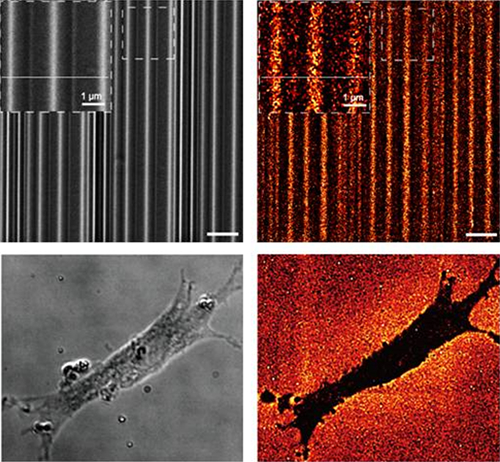With the support of National Natural Science Foundation of China (Grant No: 21974323), Jiandong Feng and his team from Department of Chemistry, Zhejiang University has made important progress in the development of a Single-molecule electrochemiluminescence (ECL) imaging method. The article entitled ''Direct imaging of single-molecule electrochemical reactions in solution'' was published in Nature on August 11, 2021. (Nature, 2021, 596, 244-249. http://www.nature.com/articles/s41586-021-03715-9)
Revealing reaction location, pathways and dynamics at the single-molecule level is of vital importance for advancing understanding of chemistry and biology, which highlights the need for precision chemical and physical measurements. Single-molecule chemical reactions are accompanied with exceedingly weak optical, electrical and magnetic signal changes, and the process of chemical reactions and the location where chemical reaction occurs are stochastic. Therefore, effective control, measurement and imaging of single-molecule reactions in solution has been a grand scientific challenge.
ECL refers to the light emitting from the excited state of a redox-active material generated by electrochemical reactions in solution. Due to the fact that ECL does not require an excitation light source, ECL allows background-free imaging in total darkness, providing an advantage for observing very weak single-molecule signals. The Feng's research group developed a combined widefield optical imaging and electrochemical recording system and built an efficient ECL control, measurement and imaging setup. By spatial and temporal isolation of individual ECL reaction events, they implemented single-molecule super-resolution imaging.
Inspired by super-resolution fluorescence microscopy, the research team conducted the optical reconstruction of localized spatial molecular reactions for imaging, realizing single-molecule ECL imaging. The spatial resolution of this ECL microscopy has received an unprecedented level of 24 nm. Jiandong Feng and his colleagues continued to apply single-molecule ECL imaging to cell imaging. It was found that ECL imaging exhibited high spatial resolution comparable to super-resolution fluorescence microscopy while avoiding the use of lasers and cell labeling. They further performed single-molecule ECL imaging on live cells and observed cell adhesion dynamics.

Figure Super-resolved single-molecule ECL imaging of ITO structures and live cell.
As a novel single-molecule imaging technique, single-molecule ECL microscopy may bring in some new possibilities in chemical and biological imaging, enabling useful applications in research fields such as single-molecule analysis and reaction dynamics studies.
The authors’ findings blaze the way to a new concept in imaging: a chemistry-based approach to super-resolution microscopy. It could also lead to the development of new strategies for bioassays and cell imaging, complementing well-established fluorescence-based single-molecule microscopy techniques.

Add: 83 Shuangqing Rd., Haidian District, Beijing, China
Postcode: 100085
Tel: 86-10-62327001
Fax: 86-10-62327004
E-mail: bic@donnasnhdiary.org
京ICP备05002826号 文保网安备1101080035号 Copyright 2017 NSFC, All Right Reserved